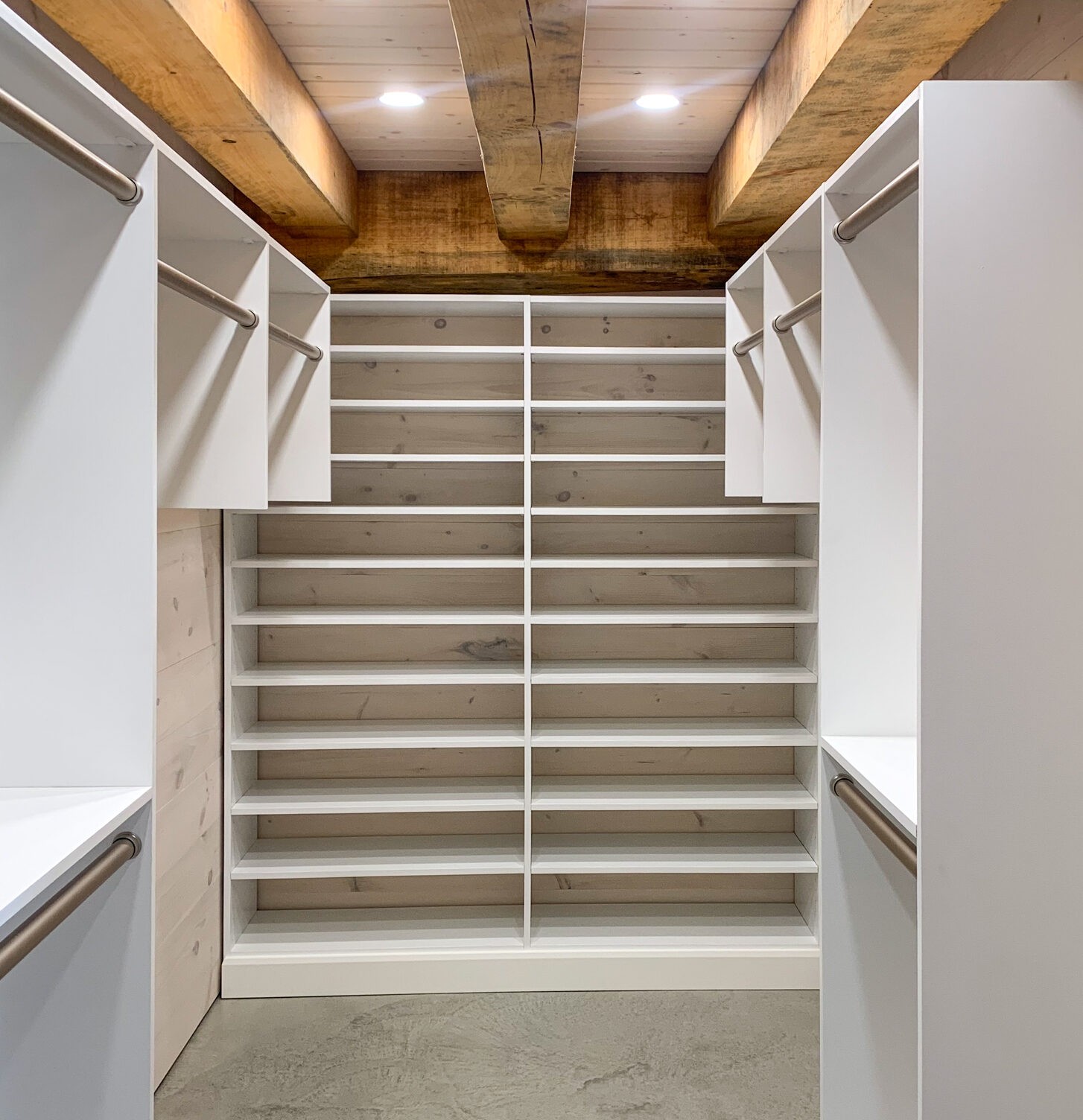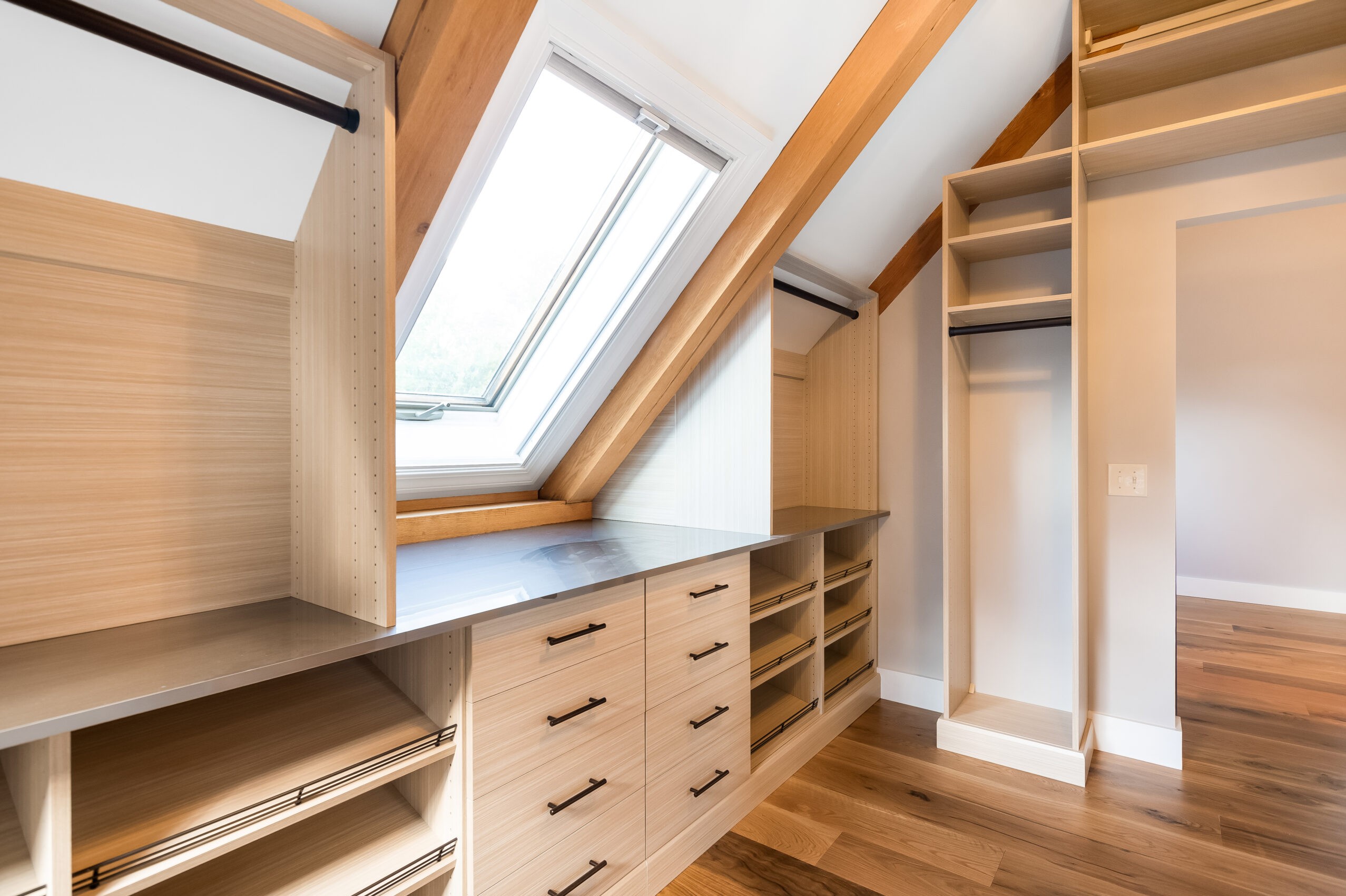Storage Solutions: Solid Wood or Engineered Wood?

Who knew there were so many options for custom storage spaces? From your overall layout to specific hardware colors, you will have many opportunities along the way to customize your storage solution! As you begin to visualize your ideal solution, you should consider what material you would like to use for your project. When selecting your ideal storage material, you have two options to consider: solid wood or engineered wood. Both materials have pros and cons, so if you are unsure which one to use, read on to discover your perfect match!
At Lake Champlain closets we want to give our clients full control over their home storage! We are proud to offer in-house woodworking using our state-of-the-art warehouse to help homeowners build the closet or storage solution of their dreams! Our team of skilled woodworkers can custom-build your storage space to any specifications giving you ultimate control to customize your space the way you want!
Solid Wood Creations
Solid wood creations have been around forever and remain a staple of interior design and furniture making. The term “solid wood” refers to what is known as natural lumber or lumber produced directly from trees. The vendors we source our materials from can provide almost any type of solid wood, be it cherry, maple, walnut, etc., so you have ultimate control!
Why Do People Like Solid Wood?
• Customization – Solid wood allows us more liberty to match your storage solution perfectly to your home. Solid wood offers many opportunities for unique cuts, specific stain colors, and an overall high-end look and feel!
• Durability – There are hundreds of types of solid wood, but hardwoods like oak or mahogany are well known for being hefty and long-lasting materials. Choosing a specific wood type can make for a very robust storage system that will last many years.
• Wood Grain – Some people adore the look and feel of the natural wood grain. While some engineered wood can mimic wood finishes, they lack the same texture.
Solid Wood Challenges

• Price – Historically solid wood has had a higher price tag than MDF, but the recent spike in building materials has made this difference even greater. Solid wood projects can cost substantially more than engineered wood ones, which is one of its major downfalls
• Natural Product – Since solid wood is a natural product, there is less uniformity from piece to piece compared to engineered wood.
• Warping – Over many years, solid wood, especially in large sections under load, is more prone to warping due to fluctuations in temperatures and humidity.
Engineered Wood Storage Solutions
Engineered wood saw its first uses in the 1920s and has continued to grow in popularity and quality. There are many different types of engineered wood from plywood to laminate flooring, however, storage typically focuses on MDF (Medium-Density Fiberboard), HDF (High-Density Fiberboard, or MFC (Melamine-Faced Chipboard). These materials have slightly different manufacturing processes, but they all come from combining byproducts/scraps from softwoods or hardwoods with resins under heat and pressure. These precise mixtures form durable materials with similar properties to solid wood, making them an excellent option for storage solutions!
Why Do People Like Engineered Wood?
• Cost-Effective – Engineered Wood is relatively cheap to produce and durable, making it an attractive alternative to solid wood for large projects that require a lot of material.
• Customizations – Engineered Woods offer a variety of customization options for consumers, such as an array of colors, glossy or matte finishes, faux woodgrains, and much more!
• Environmental – Engineered Wood is commonly created using wood residuals from other manufacturing processes and is recycled into various wood-like products, making them more eco-friendly!
Engineered Wood Challenges
• Weight – It is often assumed that solid wood is heavier than engineered wood, however, that is not always true. Some Engineered woods are denser materials due to the tight compression and may require additional supports to secure to the wall.
• Strength – While engineered woods are strong materials, solid wood shelving is better suited to store heavy items.
• Fasteners – Since engineered woods are composite materials, they do not hold nails and screws as well as solid wood and typically rely on special fasteners to assemble and attach to your walls.